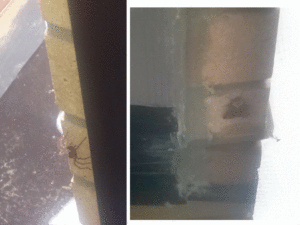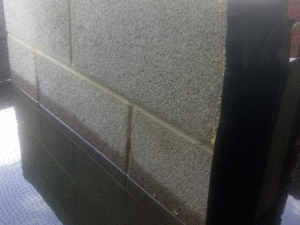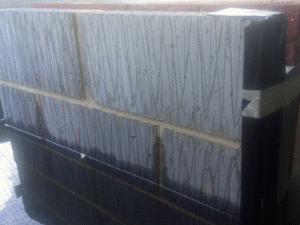Author: Fiona Gleed -
Some days experimental research is just adding data points to a developing time series but other days mark a turning point. Today is such a day
Walls built;
Mortar cured;
Cavities closed;
Time to turn on the taps!
Well not straightaway;
First we had to install the temporary barrier and then harvested rainwater could be used to fill the tank. This took about an hour, during which the water crept up the outside of the stub walls, and snuck in to the cavities.
There was much scurrying of arthropods as beetles, moths and spiders vacated their nooks and crannies to flee the rising tide. Wildlife is one of the pleasures of the Hive - hares and buzzards are regular sightings - and the first webs had been built in the cavities before the stub walls were a day old.

With 4 walls, using different combinations of brick and block, there was a chance to observe absorption patterns for the different materials. On the bricks, the mortar perps quickly darkened and fed an arc of moisture on the brick above.

The concrete blocks drew water up in a ragged line

whilst the aircrete blocks were still bubbling up trapped air a couple of hours after immersion

The water will now stay in overnight, marinating the walls for 24 hours to tie in with smaller scale tests in the lab. And tomorrow the cell will be drained down and I will start to watch the walls dry...
Respond
